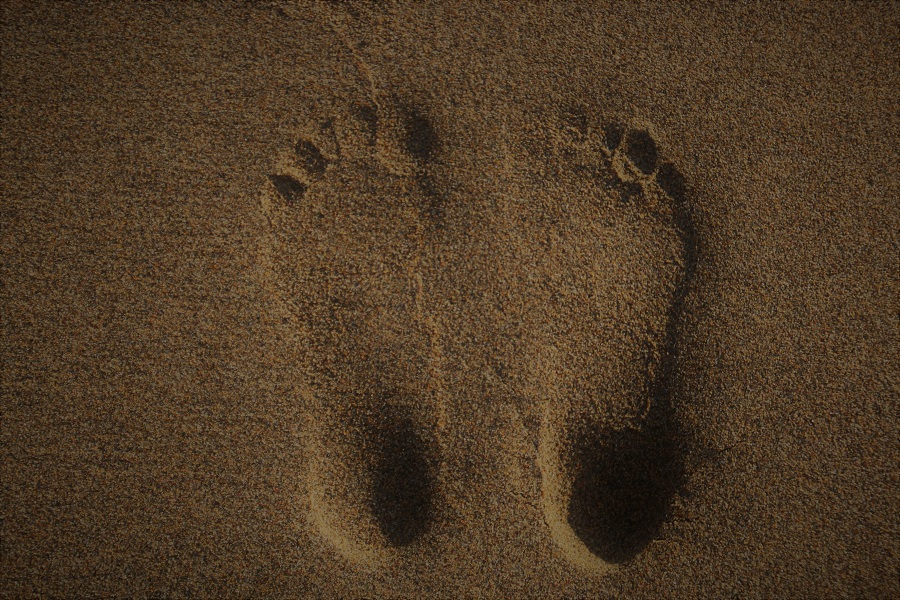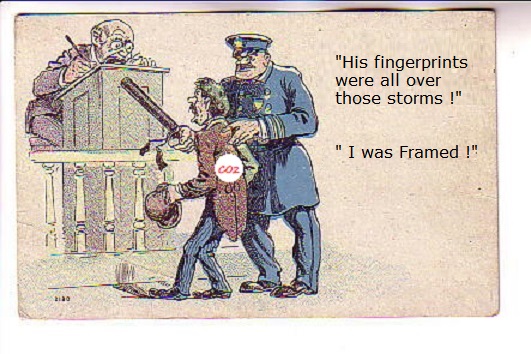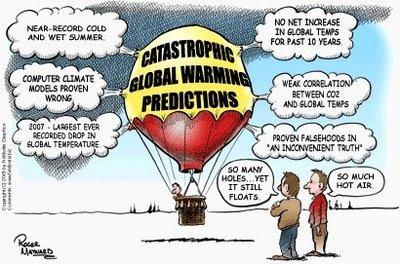Vijay Jayaraj makes the case for carbon emissions in relation to the question: Will My Carbon Footprint Benefit or Harm the Environment? May 28, 2019 at Cornwall Alliance. Excerpts in italics with my bolds and images. (Follow the title link to the article for many supporting reference links)
My cousin in California is excited about buying a Tesla. “It is environmentally friendly” he says. Maybe you agree. My friends in India, too, are excited about buying electric cars. They think doing so will help them prevent global warming.
But the evidence suggests otherwise.
Almost every environmental policy now makes reducing carbon dioxide (CO2) emissions, the only way to “go green.” Advocates have even persuaded school children to strike against fossil fuels.
But as a climate scientist, I’ve researched the pros and cons of CO2. What have I found? That our CO2 emissions will actually benefit the planet, not harm it.
Why? Here are four reasons.
Realism Not Denialism
To begin, climate change is real. The current warming trend began in the 18th century, after the Little Ice Age.
But forecasts of future warming based on faulty computer models aren’t credible. In addition, current global temperature is not unprecedented. It poses no imminent danger to ecosystems.
CO2 does contribute to warming. But the theory that it is the dominant cause is mistaken.
The scientific community is divided on how strongly CO2 can influence global temperature. But the sun and oceans play major roles. They probably far outweigh CO2.
So, call me a “climate realist,” not a “climate denier.” That is a misleading term, used to discredit those who question their hypothesis.
2. No Damage So Far, and None Coming
CO2 emissions from human activity were almost nonexistent before the Industrial Revolution in the 18th century. If CO2 is the primary driver of warming, there should have been no comparable warming before then. But numerous warming events did occur.
Two happened in the past 2000 years—the Roman Warm Period (around the 1st century A.D.) and the Medieval Warm Period (around the 10th century). Neither significantly damaged human civilization. The only global-scale climate-related damage came from the Little Ice Age of the 17th century.

So we have no reason to believe rising temperatures will cause severe global-scale problems in the future.
3. CO2 Emissions Have Benefited Us, Not Harmed Us
CO2 emissions haven’t caused global harm. Instead, they have benefited us, directly and indirectly.
The direct but smaller benefit is increased agricultural productivity. Plants grow better with more CO2. Hundreds of scientific studies demonstrate this. Greenhouse operators capitalize on it. They pump CO2 into greenhouses to make their plants grow faster and larger.

If anything, the increase in atmospheric CO2 concentration levels has helped our planet grow greener. Rising temperatures lengthen growing seasons. They enable plants to grow in places where previously it was too cold. Improved photosynthesis enables them to resist diseases and pests better and bear more fruit to feed animals and people.
The indirect but larger benefit of CO2 emissions came from the use of fossil fuels to raise billions of people out of abject poverty. CO2 emissions are the unavoidable byproduct of the combustion of fossil fuels, not pollution.

So think twice before you equate CO2 emission reduction with going green. That is the opposite of the truth.
4. While CO2 Can’t Cause Dangerous Warming, It Might Help Save Us from Cooling
Even if you contest the benefits of CO2 emissions, they cannot cause dramatic global warming. Even climate alarmists admit this. Why? Because, despite exponential increase in atmospheric CO2, no significant increase in global temperature occurred in the past 19 years. If rapid warming occurs, it is unlikely to be from CO2 emissions.

Dr. David Hathaway: Solar Cycle 25 Prediction. We find that the polar fields indicate that Cycle 25 will be similar in size to (or slightly smaller than) the current small cycle, Cycle 24. Small cycles, like Cycle 24, start late and leave behind long cycles with deep extended minima. Therefore, we expect a similar deep, extended minimum for the Cycle 24/25 minimum in 2020.
In fact, we face a possible cooling because of low solar activity. If that kicks in, whatever warming effect CO2 emissions do have will reduce the risk of a repeat of the devastation the Little Ice Age triggered.
For plant growth today and in the future, I give a green “thumbs up” to CO2 emissions. They are the real way to “go green.” Moreover, fossil fuels have immense potential to reduce poverty in developing countries. That will be more beneficial than any reduction of global warming that might come from reduced CO2 emissions.
See also CO2 Unbound



Reblogged this on Climate- Science.
LikeLike
Reblogged this on Climate Collections.
LikeLike
Reblogged this on Tallbloke's Talkshop and commented:
Man-made climate alarm? No – nothing to see, move along please.
LikeLike
The warming cycle begun in the 18th century is nothing compared to the warming cycle of 3000 years ago. And if there is any accuracy to the GISP dating, the warming cycle of 90-110K years ago (depending on whose dating you prefer) that eclipsed all of the warming periods in the Holocene.
As far as CO2 preventing cooling, that supposition is a terrible gaff. If CO2 does not take on heat to warm the atmosphere, it certainly does not release heat to the atmosphere to cooler surroundings either. Even if it did, its % by volume in the atmosphere is negligible in affecting any change whatsoever.
LikeLike
There is no correlation between year-to-year temperature change and year-to-year CO2 change (r ~ 0.1). If atmospheric CO2 change were correlated (a driver of) global temperature change, then the two would be highly correlated (a dependent relationship would exist). The two are independent, having no more than a chance relationship over any meaningful period since the late 19th century to present. They are also uncorrelated in the ice core evidence (GISP2) during the Holocene interglacial (indeed, an opposite relationship is more characteristic). CO2 and climate change are also uncorrelated in the geologic evidence over 25-million year increments of the past 550-million years.
If radiant heat transfer from Earth’s surface to atmospheric gases (occurring at the speed of light) were a “climate change” force, that relationship would be evident over the course of a year of such changes (and for any longer periods of change). Yet there is no period whatsoever throughout the past half-billion years that shows changing CO2 is a driver of climate change. And certainly, the relatively small portion of changing CO2 that results from fossil fuel use is entirely unrelated to global climate change.
The human-caused (fossil fuel use) climate change narrative is the greatest scientific hoax since the Piltdown Man. While SOME very few molecules of atmospheric gases are warmed by outbound IR from Earth’s surface, there is no evidence that this effect is any more than a natural part of the natural process by which Earth’s atmosphere maintains a stable temperature as heat naturally works its way out of the Earth-atmosphere system. There is greater evidence that (1) global climate affects atmospheric CO2 (70+% of Earth’s surface is covered by water) and (2) atmospheric CO2 creates a net cooling (according to the data).
How does a theory survive its failure to agree with the observed data?
LikeLiked by 2 people
Apparently, it is all about the hot air.

LikeLiked by 1 person
Reblogged this on O Pica-Miolos.
LikeLike
According to ice core records, the last millennium 1000AD – 2000AD has been the coldest millennium of our current Holocene interglacial , with the tipping point towards more rapid cooling happening at about 1000BC. This point is more fully illustrated with ice core records on a millennial basis back to the Eemian period here:
https://edmhdotme.wordpress.com/holocene-context-for-catastrophic-anthropogenic-global-warming/
Our current, warm, congenial Holocene interglacial, although cooler than the previous Eemian interglacial 120,000 years ago, has been the enabler of mankind’s civilisation for the last 10,000 years, spanning from mankind’s earliest farming to recent technologies.
Viewing the current Holocene interglacial on a millennial basis is realistic. But, driven by the need to continually support the Catastrophic Anthropogenic Global Warming thesis / religion Climate scientists and Climate alarmists examine the temperature and weather record at too fine a scale, weather event by weather event, month by month, or year by year.
Each of the notable high points in the current 11,000-year Holocene temperature record, (Holocene Climate Optimum – Minoan – Roman – Medieval – Modern), have been progressively COLDER than the previous high point.
The ice core record from Greenland for its first 7-8000 years, the early Holocene, shows, virtually flat temperatures overall, including its early high point known as the “climate optimum”. But the more recent Holocene, since a “tipping point” at around 1000BC, 3000 years ago, temperature has fallen at about 20 times its earlier rate.
The Holocene interglacial is already 10 – 11,000 years old and judging from the length of previous interglacial periods, the Holocene epoch should be drawing to its close: in this century, the next century or this millennium.
The slight and beneficial warming towards the end of the 20th century to a Modern high point has been exploited by Climate alarmists into the “the Great Man-made Global Warming Catastrophe”. This is a “hoax”.
The recent warming since the end of the Little Ice Age has been wholly beneficial when compared to the devastating impacts arising from the relatively minor cooling of the Little Ice Age, which included:
• decolonisation of Greenland
• Black death
• French revolution promoted by crop failures and famine across Europe
• the failures of the Inca and Angkor Wat civilisations
• etc., etc.
As global temperatures, after a short spurt at the end of the last century, are now showing stagnation or cooling over the last twenty years, the world should now fear the real and detrimental effects of cooling, rather than being hysterical about limited, beneficial or probably now non-existent further warming.
Warmer times are times of success and prosperity for man-kind and for the biosphere. During the Roman period the climate was warmer and wetter such that the Northern Sahara was the breadbasket of the Roman empire.
But the coming end of the present Holocene interglacial will eventually again result in a mile-high ice sheet over much of the Northern hemisphere.
As the Holocene epoch is already about 11,000 years old, the reversion to a true ice age is becoming overdue. If the world emotionally needs to fear a man-made climate catastrophe, that reversion to true Ice Age conditions will be the real climate catastrophe for mankind.
With the present reducing Solar activity, significantly reduced temperatures, at least to the level of another Little Ice Age are predicted quite soon, later in this century. Whether the present impending cooling will really lead on to a new glacial ice age or not is still in question.
LikeLiked by 1 person
Thanks Ed for summing up the situation. It seems to me that cooling is the greater threat to human health and prosperity. Thus we should invest in robust infrastructure and affordable reliable energy, rather than attempts to control the weather.
LikeLiked by 1 person
Ron, it wouldn’t hurt also to invest in better education that doesn’t teach science fiction. Too many kids are being frightened into becoming young activists (as Sen. Feinstein, CA, found out earlier this year).
LikeLike
Ron,
Thank you for consistently excellent essays.
Have you considered collecting them into a book?
LikeLike
Thanks hunterson. I’ve been so busy reacting to crazy things put out in the media that my thoughts have not gone very far that way. If you want to help me, browse on my blog and come up with list of categories that better represents the themes that have been addressed.
Right now I have only five categories, two of which are fairly clean: Arctic Ice Extent, and Oceans Make Climate. But embedded in Science and Society is a whole bunch of loosely related stuff: Climate Litigation, Climate Finance, Climate Medicine, Climate Policies etc.. And better than just topics would be a headline regarding each subject.
LikeLike
On second thought hunter, I’m going to do this, go through all the posts and group them more specifically. When I’m done I’ll post the new structure.
LikeLike